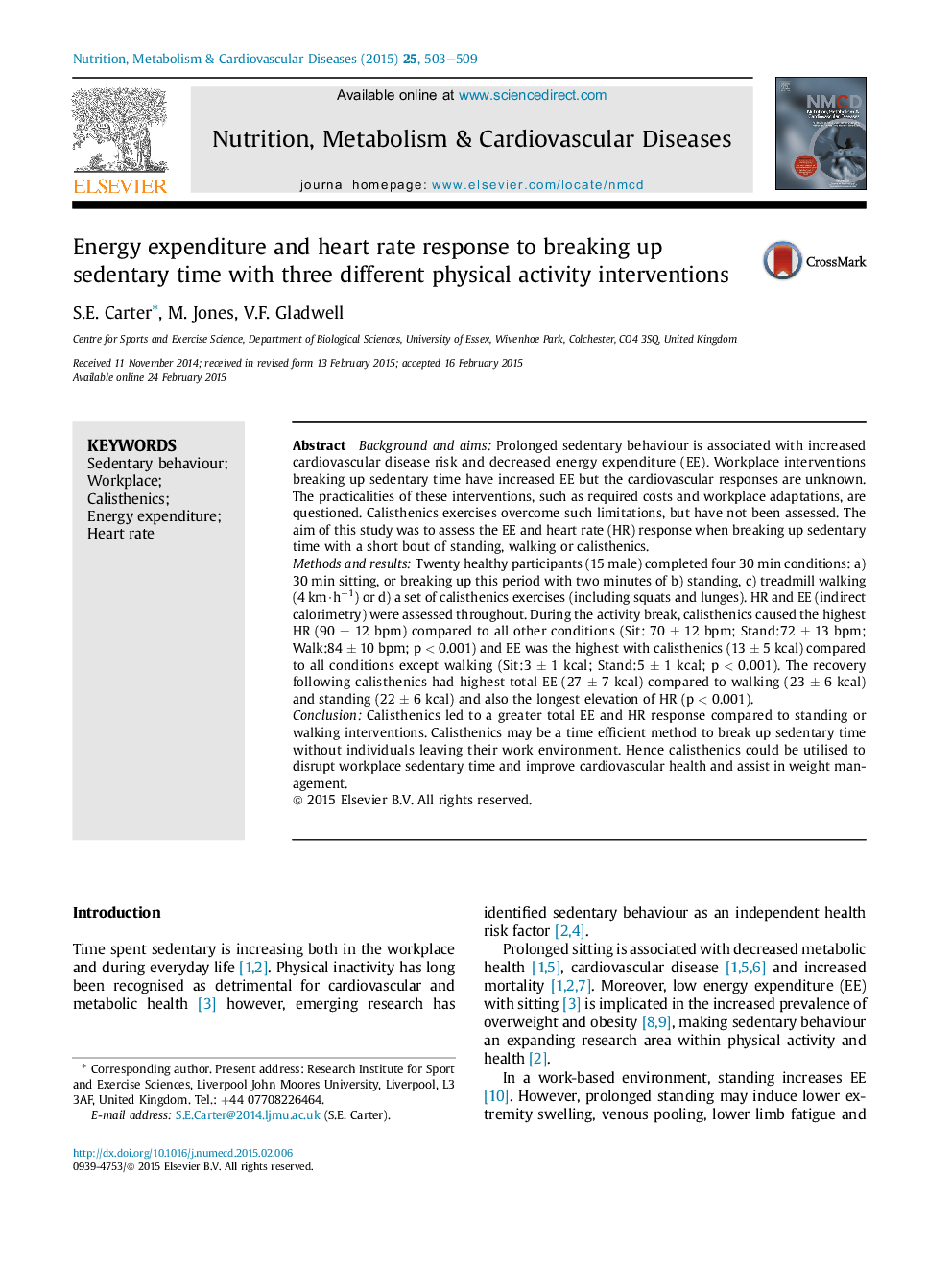| کد مقاله | کد نشریه | سال انتشار | مقاله انگلیسی | نسخه تمام متن |
|---|---|---|---|---|
| 3001819 | 1180677 | 2015 | 7 صفحه PDF | دانلود رایگان |
• Calisthenics exercises were used for the first time to break up sedentary time.
• Calisthenics caused greater energy expenditure than standing or walking interventions.
• Calisthenics also caused a greater heart rate response than these interventions.
• In the long term this may assist with weight management and cardiovascular health.
• Calisthenics are a potential workplace intervention strategy to break up sedentary time.
Background and aimsProlonged sedentary behaviour is associated with increased cardiovascular disease risk and decreased energy expenditure (EE). Workplace interventions breaking up sedentary time have increased EE but the cardiovascular responses are unknown. The practicalities of these interventions, such as required costs and workplace adaptations, are questioned. Calisthenics exercises overcome such limitations, but have not been assessed. The aim of this study was to assess the EE and heart rate (HR) response when breaking up sedentary time with a short bout of standing, walking or calisthenics.Methods and resultsTwenty healthy participants (15 male) completed four 30 min conditions: a) 30 min sitting, or breaking up this period with two minutes of b) standing, c) treadmill walking (4 km·h−1) or d) a set of calisthenics exercises (including squats and lunges). HR and EE (indirect calorimetry) were assessed throughout. During the activity break, calisthenics caused the highest HR (90 ± 12 bpm) compared to all other conditions (Sit: 70 ± 12 bpm; Stand:72 ± 13 bpm; Walk:84 ± 10 bpm; p < 0.001) and EE was the highest with calisthenics (13 ± 5 kcal) compared to all conditions except walking (Sit:3 ± 1 kcal; Stand:5 ± 1 kcal; p < 0.001). The recovery following calisthenics had highest total EE (27 ± 7 kcal) compared to walking (23 ± 6 kcal) and standing (22 ± 6 kcal) and also the longest elevation of HR (p < 0.001).ConclusionCalisthenics led to a greater total EE and HR response compared to standing or walking interventions. Calisthenics may be a time efficient method to break up sedentary time without individuals leaving their work environment. Hence calisthenics could be utilised to disrupt workplace sedentary time and improve cardiovascular health and assist in weight management.
Journal: Nutrition, Metabolism and Cardiovascular Diseases - Volume 25, Issue 5, May 2015, Pages 503–509
